Post by glactus on Feb 17, 2008 5:44:53 GMT
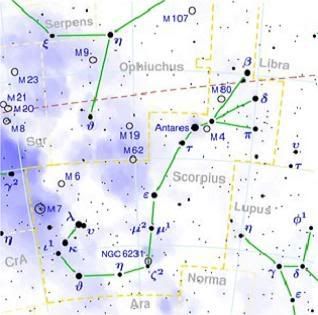
Scorpius the scorpion is one of the constellations of the zodiac. In western astrology it is known as "Scorpio", and lies near the center of the Milky Way. Scorpius contains at least fifteen stars. They are arranged in the pattern of a short string and a long string. The long string forms the scorpion's tail, which curls up at the end. Two stars at the tip of the tail form the scorpion's stinger. At the top of the long string of stars is the giant red star Antares, The best time to view Scorpiuis is July-August. Face south and look for the short string of stars that form the scorion's head. Look to the left of the head for the large red star Antares and the look below Antares to find the long string of stars that forms the scorpion's tail.
Notable stars:
Antares (Alpha Scorpii)
Antares, is the brightest star in this constellation and the sixteenth brightest star in the nighttime sky. Along with Aldebaran, Spica, and Regulus it is one of the four brightest stars near the ecliptic. The similarly colored Aldebaran lies almost directly opposite Antares in the Zodiac. Magnitude is 5.28 and distance from earth is 600 light years.
Graffias (Beta scorpii)
Observed through a small telescope, Beta Scorpii is found to be a binary star with a separation between the two components of 14 arcseconds, putting them at least 2200 Astronomical Units (AU) apart. They are both hot, B-class stars at least 10 times as massive as our own Sun, and will have short lives. Both are expected to end their stellar evolution in massive supernovae. Magnitude is 2.6 and distance from Earth is 530 light years.
Dschubba (Delta Scorpii)
In June 2000, Delta Scorpii was observed by Sebastian Otero to be 0.1 magnitudes brighter than normal. Its brightness has varied since then and has reached as high as magnitude 1.6 or 1.7, altering the familiar appearance of Scorpius. Spectra taken after the outburst began have shown that Delta Scorpii is throwing off luminous gases from its equatorial region. As of 2005 the flareup continues. Although the brightness varies, it remains well above its previous constant magnitude. Distance from Earth is 400 light years.
Lambda Scorpii
Lambda Scorpii is a multiple star with three visible components. The first, Lambda Scorpii A, is classified as a B-type subgiant. The 15th magnitude Lambda Scorpii B has a separation of 42 arcseconds from component A, while the 12th magnitude Lambda Scorpii C is 95 arcseconds from A. Distance from Earth is 700 light years.
Notable objects:
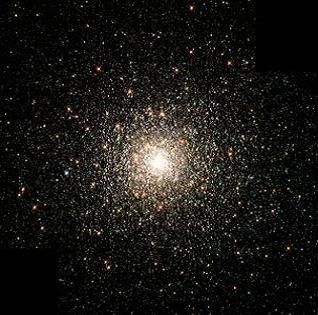
Messier M80
M80 is located midway between a Scorpii (Antares) and b Scorpii in a field in the Milky Way that is rich in nebulae. It can be viewed with modest amateur telescopes as a mottled ball of light. Spanning about 10' on the sky and given its estimated distance of 32,600 light-years, M80's spatial diameter is about 95 light-years and it contains several hundred thousand stars. It is among the more densely populated globular clusters in the Milky Way Galaxy. Magnitude is 7.87.
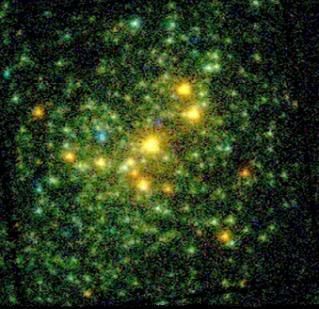
NGC 6231
This deep observation with the XMM-Newton Observatory has given astronomers one of the most detailed views of the X-ray emission from a birthplace of massive stars, the open cluster NGC 6231. The brightest source, at the center of the image above, is a massive binary system in which the X-ray emission arises from the collision of the wind from one star with the wind of its companion. Magnitude is 2.6 and dictance from Earth is 6,100 is light years.
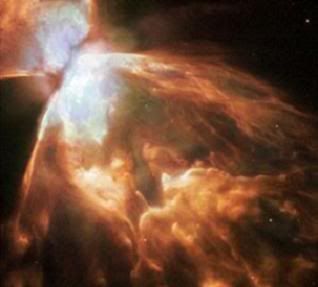
NGC 6302
The spectrum of NGC 6302 shows it's central star is one of the hottest objects in the galaxy, with a surface temperature in excess of 200,000 K. The Bug nebula is a double-lobed structure that has resulted from a bipolar outflow. The extremely high rate of expansion (nearly 400 km/s) and the high concentration of ionized iron in the nebular gas suggests that the material making up the Bug was ejected with unusual violence. Magnitude is 7.1 and distance from Earth is 6,500 Light years.

NGC 6357
The emission nebular NGC 6357, (the cat's paw nebula,) is home for the beautiful star cluster Pismis. The stars are some of the most massive ever seen in our galaxy, each of which weighs at least 100 times the mass of our Sun. Astronomers originally thought it was two stars, each of which exceeded the theoretical limits on stellar size. Hubble discovered that it's actually three stars, bringing the reality back in line with theory. Magnitude is 5.3 and distance from Earth is 8,000 light years.
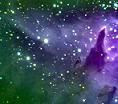
The cat's paw
credits:
Scorpius map: Wikipedia
en.wikipedia.org/wiki/Scorpius
image: Messier M 80: A Hubble Space Telescope
/NASA/ESA.
en.wikipedia.org/wiki/Messier_80
image: NGC 6231:NASA gov: XMM-Newton Observator
heasarc.gsfc.nasa.gov/docs/objects/heapow/archive/stars/ngc6231_xmm.html
image: NGC 6302: special credit daviddarling
www.daviddarling.info/encyclopedia/B/Bug_Nebula.html
image:NGC 6357:spaceflightnow
www.spaceflightnow.com/news/n0201/22geminisouth/


